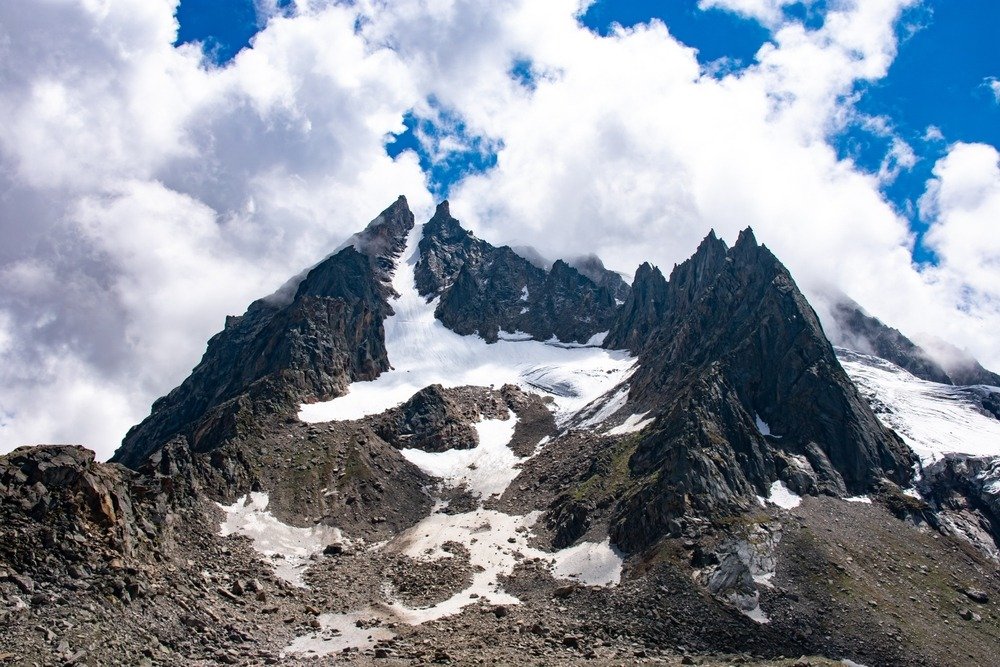Embarking on the Hampta Pass Trek has been one of my most thrilling adventures. This hike, which is well-known for its stunning vistas and difficult terrain, calls for more than just a passion for the great outdoors—it also calls for mental and physical toughness. In this guide, I’ll share my personal tips and experiences to help you prepare for the Hampta Pass Trek.
Introduction
Picture this: you’re standing atop the Hampta Pass, the world below you, the sky above, and a sense of accomplishment washing over you. To make this dream a reality, proper training is essential. This article provides comprehensive fitness tips to prepare you for the Hampta Pass Trek, ensuring a safe and enjoyable journey.
Understanding the Hampta Pass Trek

Before diving into the fitness regime, it’s important to understand what the Hampta Pass Trek entails. Situated in India’s Himachal Pradesh area, the hike covers around 35 kilometers and ascends to 14,010 feet in elevation. The route offers diverse landscapes, from lush green valleys to stark, barren mountains, and often includes walking on snow and crossing streams.
The trek typically takes around 4-5 days, depending on your pace and the weather conditions. Each day presents its own set of challenges, from steep ascents and descents to navigating rocky terrains and slippery paths. The altitude can also pose a challenge, as the air gets thinner the higher you go, making breathing more difficult and increasing the risk of altitude sickness.
Even with these difficulties, the Hampta Pass Trek has great rewards. You’ll traverse through beautiful landscapes, camp under starry skies, and experience the serenity of nature. The sense of achievement you’ll feel upon completing the trek is unmatched. Understanding the demands of the trek is the first step towards adequately preparing for it.
Why Fitness is Crucial
Why is fitness such a big deal for the Hampta Pass Trek? Imagine trying to hike up a steep hill with a backpack while struggling to catch your breath—sounds tough, right? Good fitness levels can make the difference between enjoying the journey and simply enduring it. Strong muscles and cardiovascular endurance help you tackle steep ascents and long days of walking.
Another important factor in preventing injuries is fitness. A well-conditioned body is less likely to suffer from strains, sprains, and other injuries that can occur during strenuous activities. Strengthening your muscles, especially those in your legs, core, and back, can provide the support and stability needed to navigate uneven terrains safely.
Additionally, being fit can enhance your overall trekking experience. When you’re physically prepared, you’re able to focus more on the breathtaking scenery around you rather than being consumed by physical discomfort. You’ll have more energy and stamina to explore side trails, take photos, and fully immerse yourself in the adventure.
If you’re looking for a reputable company to assist with your Hampta Pass Trek, consider The Searching Souls. They specialize in organizing trekking adventures in the Himachal Pradesh region, offering experienced guides, safe trekking routes, and well-planned itineraries tailored to different fitness levels. Their commitment to quality and customer satisfaction ensures a memorable and enjoyable trekking experience.
Cardiovascular Conditioning
1. Start with Walking and Hiking
Begin your training with regular walks, gradually increasing your distance and pace. Walking is the foundation of your trekking fitness. Start with short, easy walks and slowly build up to longer, more challenging hikes. Walk on a variety of terrains to help you prepare for the circumstances you’ll encounter on the hike. Walking not only improves cardiovascular health but also strengthens your leg muscles and builds endurance.
2. Running and Jogging
Introduce running or jogging into your routine to boost cardiovascular health. Try to go in for at least half an hour three or four times a week. Running enhances your lung capacity and heart health, preparing your body for the increased oxygen demands at higher altitudes. When you first start running, mix walking and jogging and increase the jogging intervals progressively as your fitness level rises.
3. Stair Climbing
Stair climbing mimics the uphill sections of the trek. Practice on staircases or use a stair machine at the gym. This exercise targets your leg muscles, particularly the quads and glutes, which are essential for ascending steep trails. Try to incorporate stair climbing into your routine at least twice a week. You can increase the difficulty by carrying a backpack to simulate the weight you’ll be carrying during the trek.
Strength Training

1. Lower Body Strength
Focus on exercises like squats, lunges, and step-ups. These strengthen the muscles you’ll rely on during the trek. Squats and lunges target the quads, hamstrings, and glutes, providing the power needed for uphill climbs. Step-ups mimic the action of stepping up onto rocks and ledges, a common scenario on the trail. Aim to perform these exercises two to three times a week, gradually increasing the weight or resistance.
2. Core Strength
A strong core improves balance and stability. Include exercises like leg lifts, Russian twists, and planks in your routine. Your core muscles, including the abs, obliques, and lower back, play a vital role in maintaining balance and posture while carrying a backpack. Strengthening these muscles can help prevent lower back pain and improve your overall endurance. Include core exercises in your workouts at least three times a week.
3. Upper Body Strength
Don’t neglect your upper body. Push-ups, pull-ups, and dumbbell rows are great for building strength needed for carrying your backpack. A strong upper body can help you manage the weight of your gear, especially during long days of trekking. Focus on exercises that target the shoulders, back, and arms. Incorporate upper body workouts into your routine two to three times a week, ensuring a balanced approach to your training.
Flexibility and Balance
1. Yoga
Yoga enhances flexibility and balance. Practice postures such as warrior, downward dog, and tree pose. Yoga not only increases your range of motion but also eases stress and promotes mental calmness. Regular yoga sessions can increase your range of motion, making it easier to navigate tricky terrains and preventing muscle stiffness. Try to incorporate yoga into your routine at least once or twice a week.
2. Stretching
Regular stretching reduces muscle stiffness. Focus on hamstrings, calves, and hip flexors. Stretching before and after your workouts can improve muscle elasticity and prevent injuries. Hold each stretch for at least 30 seconds and avoid bouncing, which can cause muscle strain. Incorporate dynamic stretching (moving stretches) before your workouts and static stretching (holding stretches) after your workouts.
3. Balance Exercises
Try exercises like single-leg stands or using a balance board to improve your stability on uneven terrain. Good balance is crucial for trekking, especially when navigating rocky paths or crossing streams. Balance exercises strengthen the stabilizer muscles in your legs and core, reducing the risk of falls and injuries. Incorporate balance training into your routine two to three times a week.
Mental Preparation
1. Visualize the Trek
Visualization techniques can help you mentally prepare. Imagine the trail, the effort, and the success. Visualization is the process of forming an optimistic and motivated mental picture of yourself finishing the trek. Spend a few minutes each day visualizing yourself overcoming challenges and reaching the summit. This mental rehearsal can help reduce anxiety and prepare you for the physical demands of the trek.
2. Mindfulness and Meditation
These practices can reduce anxiety and improve focus. A calm mind handles stress better. While meditation eases tension and helps you clear your mind, mindfulness focuses on being totally present and involved in the moment. Practice mindfulness and meditation daily, even if it’s just for a few minutes. These techniques can enhance your mental resilience, making it easier to cope with the challenges of the trek.
3. Set Realistic Expectations
Understand that the trek will be challenging. Setting realistic goals helps in maintaining motivation. It’s important to acknowledge that there will be difficult moments during the trek. Setting small, achievable goals can keep you motivated and focused. Break down the trek into manageable sections and celebrate each milestone you reach. Recall that enjoying the trip is just as important as reaching the summit.
Acclimatization
1. Gradual Ascent
To avoid altitude sickness, plan for gradual altitude gain during the trek. Rapid ascent can increase the risk of altitude sickness, which can be dangerous. Plan your trek itinerary to include rest days and allow your body time to adjust to the higher altitude. Pay attention to your body and refrain from using excessive force. If you experience symptoms of altitude sickness, such as headaches, nausea, or dizziness, take immediate action to descend to a lower altitude.













































